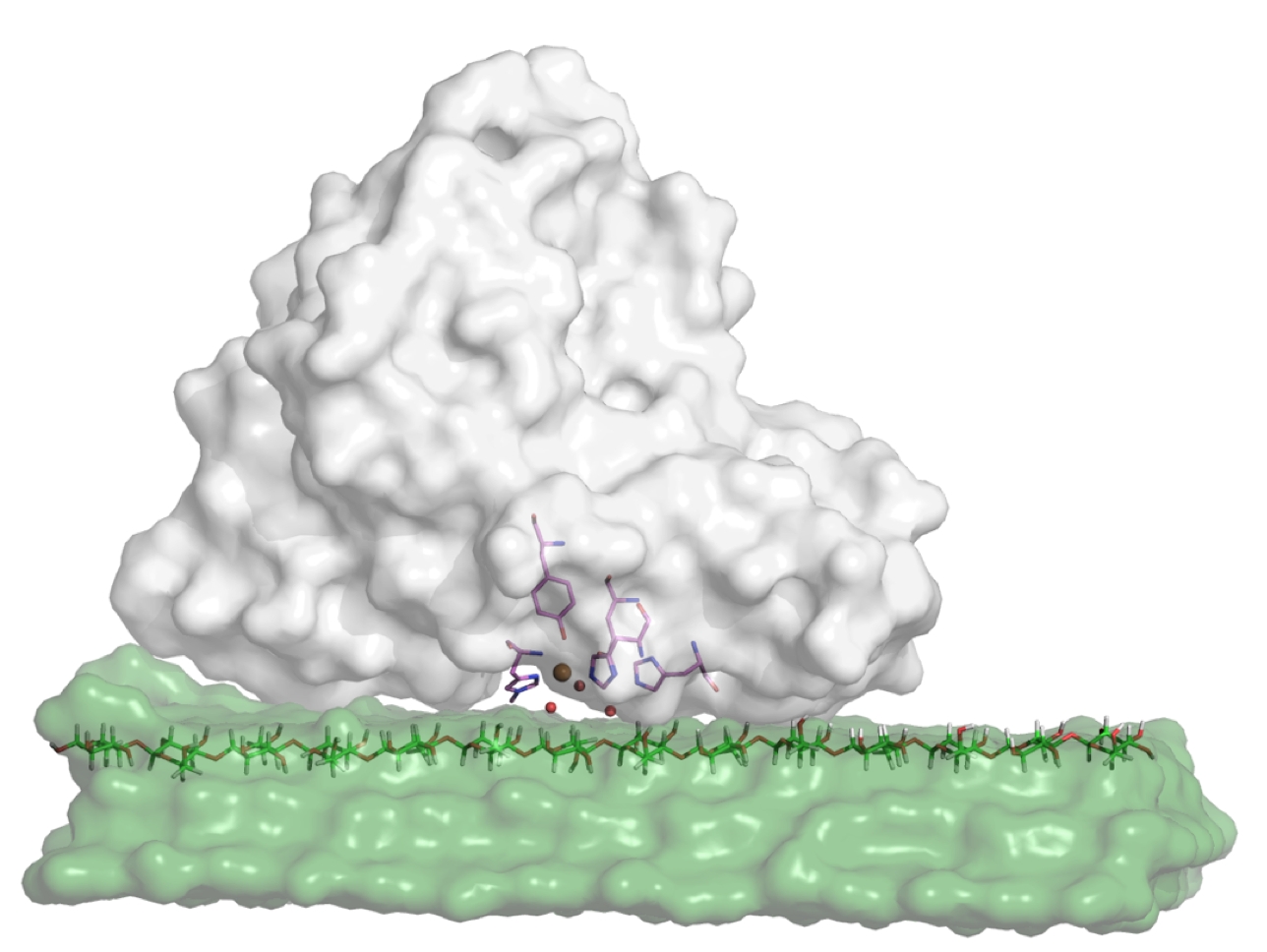
Active site model of the lytic polysaccharide monooxygenase (LPMO) enzyme of Thermoascus aurantiacus, a heat-loving mold. Illustration of the T. aurantiacus LPMO (gray) with cellulose (green) with the LPMO active site and a cellulose chain in stick format.
[The following is Part six in a series of stories that highlight recent discoveries enabled by the Stampede supercomputer. Read parts one, two, three, four and five to find out how Stampede is making a difference through science and engineering.]
Scientists from the National Renewable Energy Laboratory (NREL) are using the National Science Foundation-supported Stampede supercomputer to improve biofuel production by determining how certain enzymes break down cellulose (plant cell walls).
In a paper published in the Proceedings of the National Academy of Sciences in January 2014, they describe a newly-discovered, naturally-occurring enzyme modeled with Stampede that could significantly speed up the process by which cellulose is decomposed. The enzyme, called lytic polysaccharide monooxygenase or LPMO, represents an important, unique discovery because of its prevalence in nature, and its potential importance to cost-effective biomass deconstruction.
Using Stampede, the researchers examined two ways that the fungal enzymes catalyze reactions. The simulations suggest that the binding of copper and oxygen by the enzymes is critical to its function. The group is also using Stampede to design chemical catalysts for high-temperature deoxygenation chemistry, which is important to convert biomass to fuels.
Said NREL Senior Engineer Gregg Beckham: “Stampede has been an absolutely essential resource for our group to examine biological and chemical catalysts important for the production of renewable transportation fuels from lignocellulosic [plant-based] biomass.”
— Aaron Dubrow, NSF 703-292-4489 adubrow@nsf.gov
Investigators
Gregg Beckham
Related Institutions/Organizations
Colorado School of Mines
University of Texas at Austin
Locations
Austin , Texas
Golden , Colorado
Related Programs
Cyber-Enabled Discovery and Innovation
Petascale Computing Resource Allocations
Related Awards
#1134872 Enabling, Enhancing, and Extending Petascale Computing for Science and Engineering
#1125235 CDI-Type II: From Simulation Data to Mechanistic Understanding: Applications to Clathrate Hydrate Nucleation Mechanisms
Years Research Conducted
2009 – 2014
Total Grants
$52,108,625
Related Agencies
National Renewable Energy Laboratory
Source
National Science Foundation, press release, 2014-06-30.
Supplier
Colorado School of Mines
National Academy of Sciences
National Renewable Energy Laboratory (NREL)
National Science Foundation (USA)
University of Texas
Share
Renewable Carbon News – Daily Newsletter
Subscribe to our daily email newsletter – the world's leading newsletter on renewable materials and chemicals









